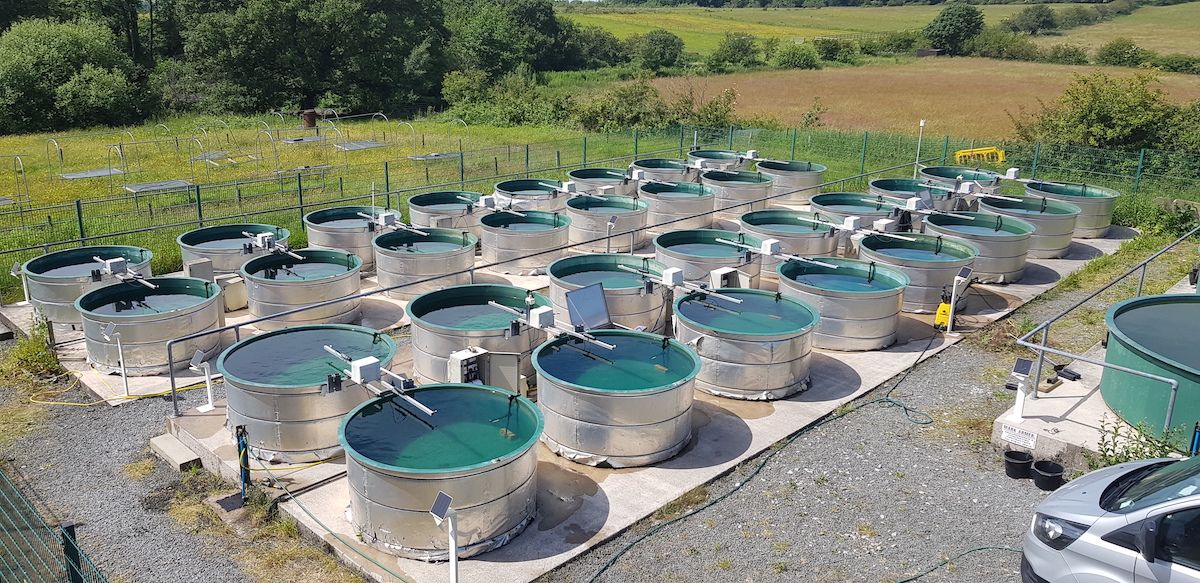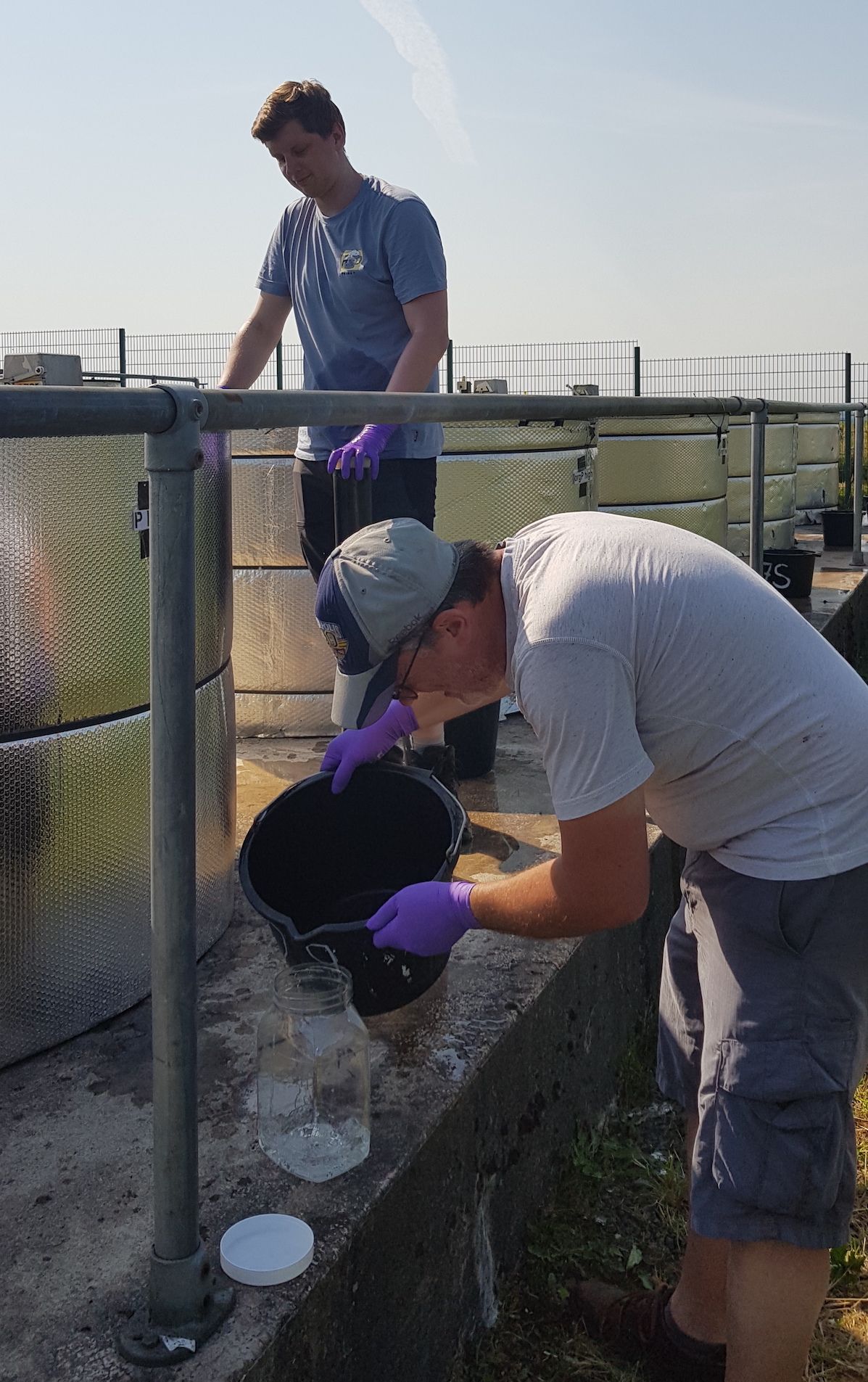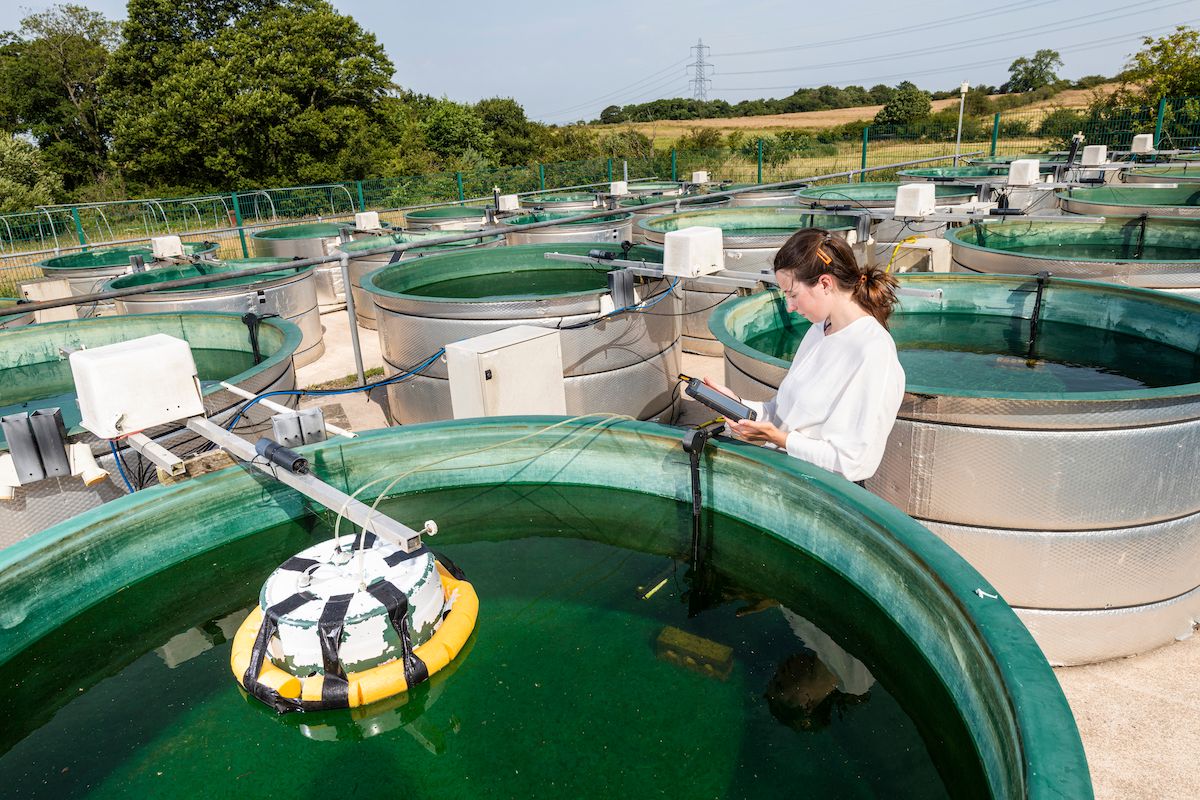Facilities
Transnational Access
Metadata & Data
Papers & Reports
Knowledge Base
A collaboration with Drinking Water Industry: a mesocosm experiment on Taste and Odour in Lancaster, UK
21st March 2023
The drinking water in the United Kingdom is sourced mainly from reservoirs, separate water companies supply different areas within the UK. Supplying a nation with surface water sources is challenging, especially in recent decades, with increasing climate warming and climate extremes. Apart from the obvious water quantity fluctuations, increasing problems with water quality are testing the Industry; one of these is taste and odour problems. Detectable by humans at very low concentrations (<10 ng L-1), compounds like Geosmin and 2-Methylisoborneol (2-MIB) are produced by a variety of freshwater plankton & bacteria. While some companies might not be aware of the problem as reservoir samples might not be taken and water treatment plants are able to cope and remove the compounds, others are well aware! Knowing that Taste and Odour fluctuate throughout the year and which species are likely responsible for high Geosmin or 2-MIB measurements, the question of what triggers those events remains.
The team set out to answer just this question. Presenting the idea of a Taste and Odour mesocosm experiment to existing contacts in the Water Industry helped to get others on board, as well as teaming up with the Head of the Taste and Odour working group in the UK. Together, we managed to convince six drinking water companies to co-fund the mesocosm experiment.
Water was collected from a reservoir known to suffer from re-occurring taste and odour problems with a 25,000 litre tanker doing three trips. The tanker offered a great opportunity for us to make pictures from our mesocosms site when climbing on top.

Treatments of different phosphorus additions as well as different ammonium to nitrate ratios were established at the beginning of July 2022 while ensuring a molar N:P ratio of around 9 to encourage cyanobacteria growth. This resulted in 7 treatments which we replicated four times. A total of twelve TA users from Belgium, France, Germany, Greece and Turkey took part in our experiment. Cross mixing the water in the mesocosms at the beginning of July, the differences in climate adaptation became apparent: while English colleagues walked around the site in t-shirts, Belgians were dressed in light, long-sleeved tops and Greek TA-users were wrapped in thick winter jackets.
Measurements of, and samples for, water temperature, solar radiation, pH, O2, TP, TN, TON, ammonia, SRP, viruses, chlorophyll a, cyanobacteria chlorophyll, eDNA, metagenomics, zooplankton abundance and microbiome, oxic methane, Geosmin and 2-MIB, cyanobacterial toxins and algal ID were taken every week. Results are still coming in, so we cannot say much about the outcomes currently. The team had a fantastic time and learned a lot from the exchange with the TA users.

